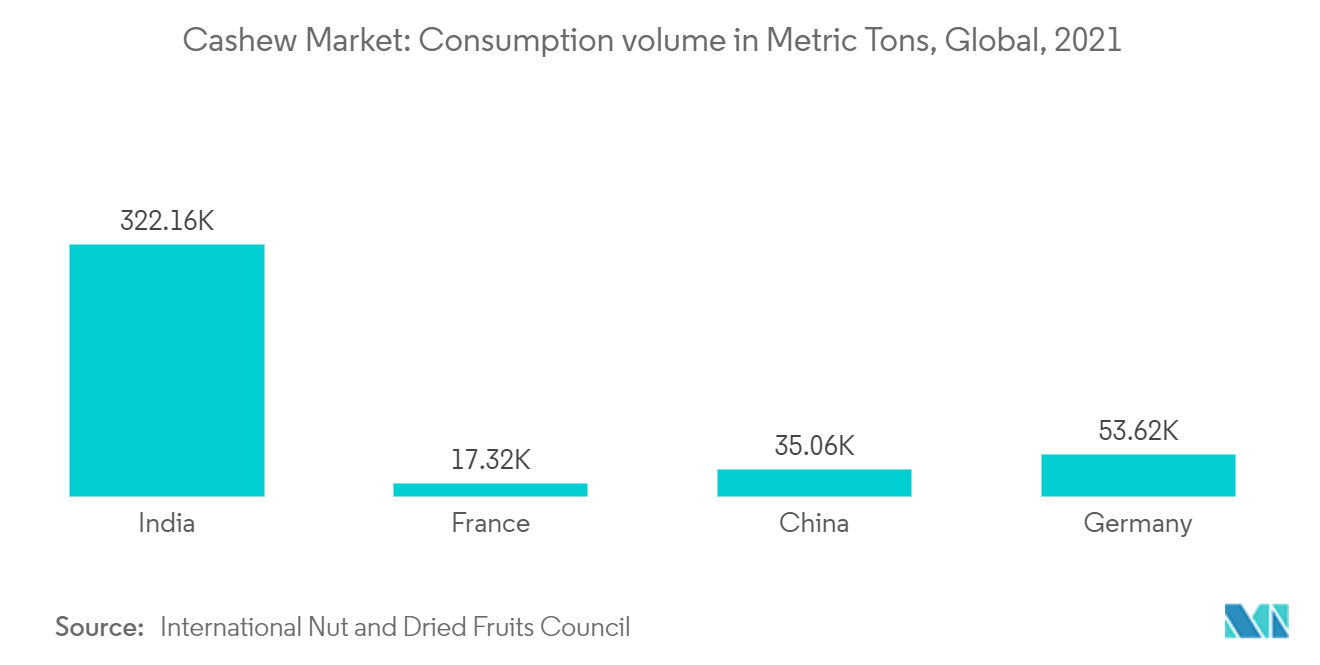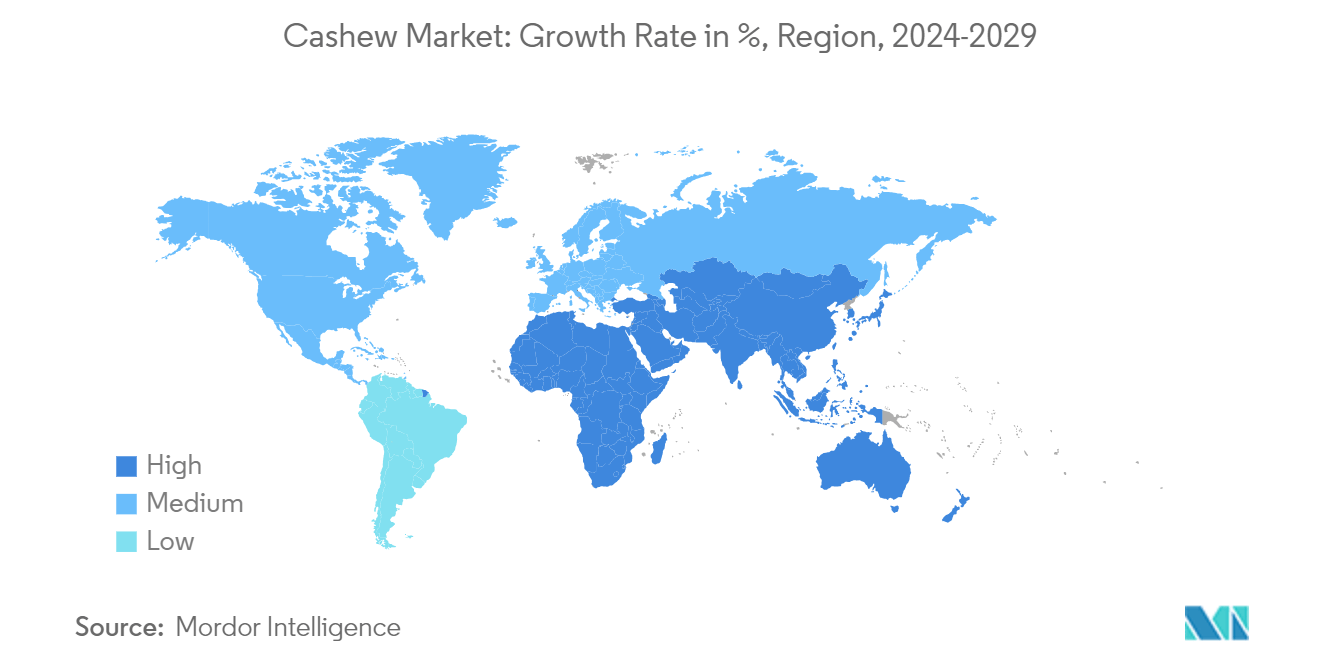Market Trends of Cashew Industry
Rising Consumption of Cashew Nuts as a Healthy Snack
- The consumption of cashew nuts has increased in countries such as the United States, China, India, Canada, Thailand, France etc, in recent years. For instance, according to the International Nut and Dried Fruits Council, the per capita consumption of cashews in 2019 was 0.48 kg/year, which increased to 0.54 kg/year by 2021. Moreover, the major reason for increased cashew nut consumption is the health benefits of cashew consumption. Cashew consumption helps lower blood sugar levels, reduce heart disease, weight loss and Type 2 diabetes, and lower cholesterol levels. In addition, the rising population with diseases is promoting the consumption of cashews to prevent diseases and inflammations.
- Although Thailand and India are the major cashew processing countries, imports of shelled cashews grew steadily owing to the domestic demand surpassing the supply in recent years. According to the International Nut and Dried Fruit Council, the estimated per capita consumption in India increased to 0.22 kilograms per year in 2021 from 0.19 in 2019.
- In addition, edible cashews have been used as a snack for a long time. Cashews are also used as one of the main ingredients in preparing various sweet and savory dishes, especially in Asian cuisine. Moreover, cashews are used in mueslis, energy bars, cookies, chocolates, and ice creams. Cashews are known to be high in nutrients, such as copper, which improve bone health, as one ounce of cashew contains 622 micrograms of copper. Nevertheless, cashews have an inflation-driven consumption pattern, as reported by the International Nut and Dried Fruit Council. Thus, the rising consumption of cashew nuts is anticipated to drive the global cashew market during the forecast period.

Asia-Pacific Dominates the Market
- The cashew tree is found worldwide, but it is mostly grown commercially in Northeastern Brazil, Southeast Venezuela, and India. Nowadays, cashew trees grow in other tropical and warm regions, such as Southeast Asia, Africa, and India. More than 80% of cashew cultivation is done by smallholding farms, ranging in size from 0.5 ha to 5 ha in countries of Asia. Medium- and large-scale commercial plantations produce 10-15% of the total production by employing hired laborers in the region.
- Major cashew nut-producing countries in Asia-Pacific are Vietnam, India, Sri Lanka, Indonesia, and the Philippines. The region is the pioneer of cashew trade and processing on the global platform, which drives the market during the forecast period. According to the Food and Agriculture Organization (FAO), India and Vietnam were the two major cashew producers, which accounted for 752,000 metric tons and 341680.33 metric tons, respectively, in 2022.
- Further, Asia-Pacific has been a consistent importer of cashew kernels despite the presence of large cashew-producing countries, such as India and Vietnam, in the region. In terms of consumption, India is the leading country in the world. As Vietnam leads in the production of cashews worldwide, it is also a significant exporter of the same to other international markets.
- Asia-Pacific is one of the largest consumers of cashew nuts in the world. In recent years, there has been an increasing interest in the use of cashew nuts in regular diets and healthy ready-to-eat snacks. The rising number of manufacturers producing innovative cashew-based consumables has taken both young and geriatric consumers by stride. For example, roasted and spice-coated cashew nuts that appeal to the local palate were introduced in India.
- Nuts have become a primary component in the Chinese diet since the inception of the National Health Policy called 'Dietary Guidelines for Chinese Residents,' which emphasizes daily nut consumption. The increased cashew nut imports may also be attributed to the new product campaign of selling 'daily nuts,' including cashews, in ready-to-eat packages, by Chinese nut manufacturers, thus driving the cashew nut market in the country.


